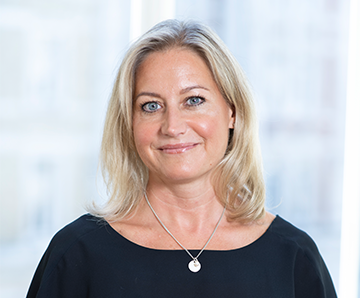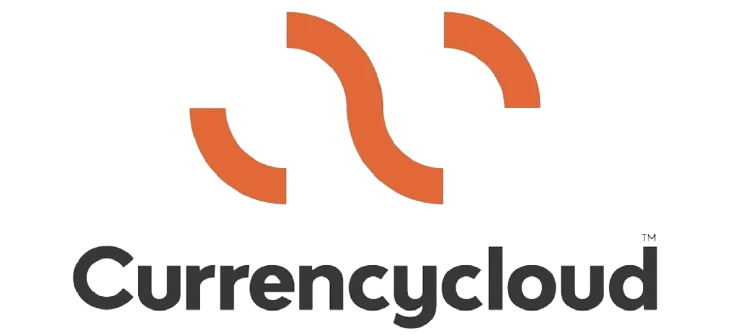Barney Wragg, CEO and Co-founder of Karakuri, talks to Jane Dowding, Non-Executive Director at Erevena, about a remarkable career, in which he has been involved in growing some phenomenal businesses that have helped to shape both the music and technology industries.
Today, he is shaking up the world of catering, spearheading the Karakuri mission to change the way food is prepared, offered and experienced using AI and robotics to tackle food waste.
Tell us what sparked your early career
I was always interested in two things from a young age: music and technology. But I wasn’t a musician, rather I was fascinated by the technology behind it. This led to me starting a business at school promoting bands and gigs. It was a hobby that became a business and was quite successful.
I did a degree in physics, specialising in acoustics. I was interested in either being a Record Producer or an A&R (artist & repertoire) manager for a record company, but there was only one course in the UK for this and it was heavily oversubscribed. So, instead I went to the same university, The University of Surrey to study Physics with Acoustics, hoping I’d still get access to the performance Art and Technology facility. Part way through the Physics course I took a sandwich year to work with a university spin-off that was developing imaging systems because I’d developed an interest in ultrasonics.
This was in the early 1990s before it became fashionable to work in a start-up! I went on to a few other start-ups in the early 90s, most of which failed. However, it enabled me to build a picture of why start-ups fail.
Then in the mid-1990s I saw a job advert for a little company called ARM. I knew ARM from Acorn and the Archimedes. At the time they were a small start-up and I applied for a job as a project manager. Having seen elsewhere what caused companies to fail, suddenly I was in a start-up where it all went right.
Tell us more about ARM and what you were doing?
I joined an exploding business in an exploding market. The deal with Nokia got the business into the mobile phone space just as mobile phones became a device everybody needed. My specialisation was audio and video rendering and I became interested in the MP3 format. I put together a package based on the ARM architecture and went out and sold it. Interest from manufacturers grew over time, including Apple, and the ARM architecture was suddenly in huge demand for the emerging MP3 player market.
Today, if you’ve got a fitness tracker, smartphone, or tablet it’s likely to feature the ARM processor. The success of the business was phenomenal and saw it go public in 1998.
What next on your journey?
After the IPO, and with lots of contact with hardware vendors, knowledge of software, and a music industry background, I was approached by Universal to be an advisor on the internet. This was at a time when e-commerce was unheard of and the company had little or no online presence. I spent seven years at UMG, growing the business from zero to over £100million in revenue. This came from things like new licensing models for ringtones, ringback tones, videos and iTunes downloads.
From Universal I went to EMI with a global remit to develop their digital business. I stayed at EMI until it was bought by a private equity company. After EMI, I stayed in the music industry with a move to AEG, the owners of The O2, where we developed a direct-to-consumer ticket sales platform. After AEG, I spent five years as CEO for Andrew Lloyd Webber’s Really Useful Group, during which I restructured the business.
Why did you jump from the world of big business back to a start-up?
I realised that I had moved too far from the technology and small growing businesses I’d always enjoyed. I love food and began talking with restaurateur friends about developments in AI and food technology. There was clearly a gap in the market.
Other industries had embraced the 4.0 Industry concept; however, restaurants and catering were still very analogue. Little had changed since introduction of the microwaves. I could see an opportunity for change that would be good for catering companies and their customers and at the same time cut down on food waste.
How did this become Karakuri?
While I was thinking about this space, Brent Hoberman and Henry Lane Fox had launched Founders Factory, an early-stage tech Incubator. They were also thinking about robotics in hospitality. I met with Brent and we agreed to work together.
I reconnected with Simon Watt who I’d worked with ARM and set about working on a product and business model for Karakuri.
At the core of our work is the knowledge that approximately a third of all food produced on our planet is wasted every year. This waste can be reduced with better information and data. A well-run restaurant minimises its waste by understanding its daily, weekly, and seasonal dining patterns and predicting sourcing requirements. Finding ways to stop simple things like orders getting incorrectly made in the kitchen has a huge impact on the restaurant’s margins and carbon food print. Any food wasted at the point of service is both the maximum loss to a restaurant and biggest waste of carbon consumption.
We capture all manner of data, including orders placed, wastage, season, etc. and use AI to build a model on which to predict food requirements so that restaurant staff (who are often transitory) don’t have to develop years of knowledge or experience. Just getting the food out that people want, when they want it, without error reduces the volume of waste.
But Karakuri is also about hardware, isn’t it?
Yes, automation – or robotics – is the very heart of our food preparation process. In fact, the name Karakuri reflects this. It is the word for 16th century Japanese dolls that were designed to surprise and delight guests with their seemingly magical animation and movement. This is what we’re aiming to do at Karakuri.
Automation in catering is an interesting challenge because food isn’t like other manufactured products. It can be squidgy, crumbly, wet, dry and all of the above at the same time!
As humans we have spent a lifetime learning how to pick up different foods in different ways. Our brains have told us that food doesn’t stay the same over time. We wanted to build the technology to manipulate food in a way that takes account of all these variables. And the first result is the DK-One.
What catering problem is this solving?
We’ve started in the canteen and Quick Service Market because they’re mass producing meals every day. Places like your lunchtime salad bar and school and hospital dining rooms. These locations typically need only two or three staff to prep the food and canteen early in the day, but then they do about 90% of their turnover in the very short lunchtime window when they need many extra pairs of hands. It’s stressful work and increasingly difficult to recruit people for short shift patterns.
The DK-One addresses this challenge. It is the world’s first robotic solution for high throughput, fast turnaround catering. Not only that, but it also enables 100% individualised and portion-controlled serving – allowing consumers more control and minimising operator give-away.
There’s a data element to this as well. For example, often canteen staff will over prepare food at the wrong time out of a concern that they won’t have enough to meet diners’ needs, this can lead to excessive wastage. By using AI, the DK-One alerts staff to when more ingredients need to be introduced so that food is prepared in a timely manner, with minimal waste.
How have you funded your growth?
We started out in late 2017 and in 2019 received £7million venture capital seed funding. One of our investors was Ocado who were interested in automated handling and manipulating of food and how it could be packaged. They felt our technology was a good fit with their highly robotic warehousing.
We’ve just raised another bridging round. This will take us on the next stage of our long journey.
We are in the “Model T Ford” era of food automation. We expect to start placing the first DK-One robots with customers next year. While our first product is for canteen-style catering outlets, there is also scope across the restaurant sector. As an example, Heston Blumenthal, who is on our Advisory Committee suggested that he would like to see robots that could liberate his chefs from mundane repetitive tasks, freeing them up to do the more creative work they love.
“We are the Model T Ford of food automation.”
How do you attract the talent you need to fuel your growth?
In the first instance, it was challenging because what we were trying to do is big, scary and very future looking. Then once we began to bring talent into the business, we started to better understand where to look for people and what type of working environment would attract the type of people we needed.
We’ve discovered that talent finds talent. Once people join us and find out what it’s like to work at Karakuri, they tell others. Of course, you can’t do all your recruitment via word of mouth, so we also have a full-time recruiter internally.
What impact has COVID had on your business?
It has been profound. In the first wave of lockdown the entire hospitality sector closed. We’d also been in discussions with grocers about how to automate in-store delis and salad bars. While grocers were busier than usual, they also had huge COVID related issues keeping up with demand and managing their supply chains.
This was initially very worrying. We had to adapt our strategy and slow down our development to conserve cash. After the first couple of months, restaurants started to open initially offering takeaways.
Overall, the pandemic brought a shift in customer interest. Before COVID, it was the newer challenger brands keen to do new and innovative things with automation. Since the summer, the bigger brands have pivoted and are very seriously looking at automation as part of the core business for the next five years.
Internally, I have been astounded at how our team has adapted. We’ve discovered that we can do things we didn’t think were possible in the past. As a company we build complex machines, we use everything from 3D printing to laser cutting, we work in a physical place.
Suddenly, people were working from home, sometimes in one-bedroom flats – and yet somehow, they kept going. We have now started a phased return to the workplace, creating mini bubbles to keep people safe. The pandemic has made us rethink how we see work. We’ve busted the myth that it all has to be in the office. Going forward, I can see that we will operate a more flexible environment.
Finally, is there a symmetry between your love of music and food tech?
Yes, I think so. I think it’s about the creative people in both. Great musicians and great engineers conjure an idea for something in their minds and have an ability turn it into reality.
Working with people like that turns my brain on – I love helping to take an idea from initial concept through to something real.
Share this article:













